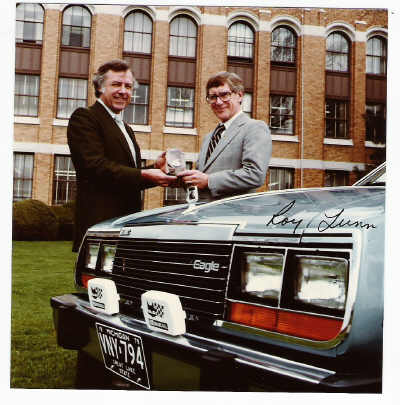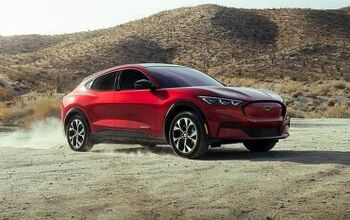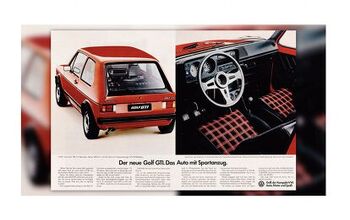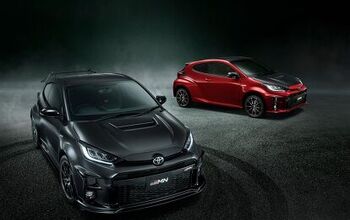How Roy Lunn Invented the Crossover for Just $6.5 Million

Roy Lunn passed away recently at the age of 92, not long after being named to the Automotive Hall of Fame. The name may be unfamiliar, but any one of his manifold achievements probably would have merited inclusion in that august institution.
Lunn was in charge of creating the Aston Martin DB2, progenitor to the James Bond cars. Moving to Ford, he had a seminal role in the development of the Anglia 105-E, Ford’s first postwar hit in Europe and the foundation of much of the brand’s later success on the continent. At Dearborn he engineered the first Mustang concept and was then put in charge of Ford Motor Company’s all-out assault on Ferrari at LeMans with the GT40, developments of which won that race four years in a row.
With LeMans conquered, he became chief engineer at American Motors, going from a virtually unlimited budget with Ford Racing to having to turn AMC’s pigs ears into silk purses, and come in at budget, too. At American Motors, Lunn helped make the original XJ Cherokee arguably the most durable American vehicle ever made.
Lunn didn’t know it at the time, but he also invented what we today call the crossover, or CUV — the UV standing for Utility Vehicle, not ultraviolet. In a sentence, a crossover is a vehicle based on a passenger car but with more ground clearance, a long, station wagon-like roofline, a rear hatch, and some kind of drive system that puts motive force at all four wheels.
While this describes the hottest segment in the automotive market now and for the foreseeable future, it also describes the vehicle Lunn pitched to his bosses at AMC, later named the Eagle 4X4. The Eagle was basically a marriage of the ultimately Rambler American-based Concord platform with a four-wheel drive system lifted from AMC’s Jeep division. Particularly in wagon form, it fits the modern definition of a crossover so much so that one has to credit Lunn with the idea. At least, I think so.
Inventors like to keep early sketches of their creations, in part to establish intellectual property rights. Nobody owns the idea of a crossover vehicle, but we do have something akin to Roy Lunn’s early sketches. We have his July 1977 Product Proposal titled 8001 + Four, 8001 being AMC’s internal code for the Concord, earlier known as the Hornet.
In the early 1970s, not long after AMC’s acquisition of Jeep, Jeep engineering put together a 4X4 Hornet as a feasibility study. It was a one-off affair featuring a specially constructed transfer case with a straight-through drive, a unique frame-mounted front axle made by Warner Gear, CV joints made specially for the project by Dana, and some modifications to the independent front suspension. The vehicle was tested for a few thousand miles before being stored away or crushed. However, it was an adequate proof of concept that the Hornet platform could be turned into a four-wheel-drive vehicle.
The 1970s saw a cascade of new federal automotive regulations for both emissions and safety, of which AMC had limited resources to respond with. Light trucks saw lighter regulations for both of these categories, and Lunn saw turning the Concord wagon into a 4X4 trucklet as a way of allowing AMC to create a vehicle that would be legal well into the 1980s (but without having to use too many of those limited resources). Lunn was a smart man, pointing out that advertising and marketing for the vehicle would need careful crafting to keep the car they were selling as a truck legal.
The idea was revisited at the end of 1976, this time with a slightly different recipe of components. UK-based GKN Ltd. was tasked with developing a new viscous control unit for the transfer case that would allow for full-time four-wheel drive without tearing up the drivetrain. FF Development, a British all-wheel-drive pioneer, was given $34,000 and three months to design and build a concept prototype.
While FF was building the concept vehicle, both Jeep and AMC Passenger Car Engineering started total vehicle design feasibility studies. The concept was finished in May, tested briefly in the UK and then shipped to Detroit. Design development continued, along with cost analysis and negotiations with suppliers, resulting in Lunn’s proposal in July of 1977, with a target date of Job 1 in 1980.
All three body styles of the platform — sedan, hatchback, and station wagon — were part of the proposal, though the resulting Eagle 4X4 is best known in wagon form. The new vehicle would be marketed with safety and security in mind.
Before the Eagle nobody had combined four-wheel drive and unibody construction. Lunn’s tour de force XJ Cherokee was still years in the future and hanging 4WD components on a vehicle without a frame was a challenge in terms of both packaging and retaining the NVH characteristics of a passenger car.
It’s a complete proposal, with listings of all the variant components needed as well as a full cost breakdown of the project. (You can read the complete proposal in PDF format here.) Lunn estimated that adding four-wheel drive to the 800 series platform would add $695 to the cost of building each car, with a total cost for the project of $6,480,000 and about a million dollars going towards the engineering of the vehicle.
For $6.5 million, Roy Lunn created a market segment worth billions of dollars today — a market so popular it has people predicting the death of the traditional sedan.
My guess is that had Mr. Lunn lived a few years longer, he might have reinvented the sedan as well. Rest in peace.
[Images: Ford Motor Co., American Motors Co., Lunn Family, Automotive Hall of Fame, Ronnie Schreiber]

Ronnie Schreiber edits Cars In Depth, the original 3D car site.
More by Ronnie Schreiber
Latest Car Reviews
Read moreLatest Product Reviews
Read moreRecent Comments
- CanadaCraig As an aside... you are so incredibly vulnerable as you're sitting there WAITING for you EV to charge. It freaks me out.
- Wjtinfwb My local Ford dealer would be better served if the entire facility was AI. At least AI won't be openly hostile and confrontational to your basic requests when making or servicing you 50k plus investment and maybe would return a phone call or two.
- Ras815 Tesla is going to make for one of those fantastic corporate case studies someday. They had it all, and all it took was an increasingly erratic CEO empowered to make a few terrible, unchallenged ideas to wreck it.
- Dave Holzman Golden2husky remember you from well over decade ago in these comments. If I wanted to have a screen name that reflected my canine companionship, I'd be BorderCollie as of about five years go. Life is definitely better with dogs.
- Dave Holzman You're right about that!



















































Comments
Join the conversation
The rest of the criteria look about right, but I'll argue until I'm blue in the face that, in order to be a CUV, it doesn't have to propel all 4 wheels. Down here in the South, people really don't care about or need that, and while I don't have stats to back this up, my general sense is that most CUVs don't have it. My sense is that most people buy CUVs instead of sedans, wagons or minivans for the image and (compared to sedans) maybe for additional space and utility, and not for having 4wd.
Don't forget there were 4 Eagle body styles, not 3. Wagon, sedan, SX4 hatch and Gremlin/Spirit-based Kammback. 5 if you include the completely ridiculous convertible. I know most "enthusiasts" associate wood panelling with the Country Squire, but for everyone I've ever met with a vague interest in cars (all born in 1990 or later), the Eagle is THE iconic use of wood panelling. I agree that this was TECHNICALLY a crossover, but the RAV4/CRV/RX definitely defined the current definition of the segment. When FF was mentioned I couldn't help but imagine a jacked up Jensen Interceptor, which would have probably made one of the coolest vehicles of all time even cooler.